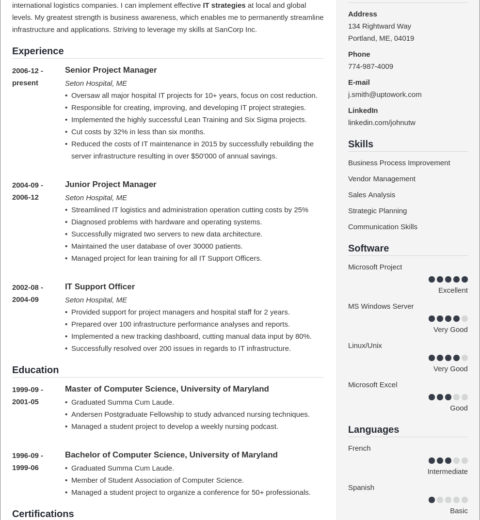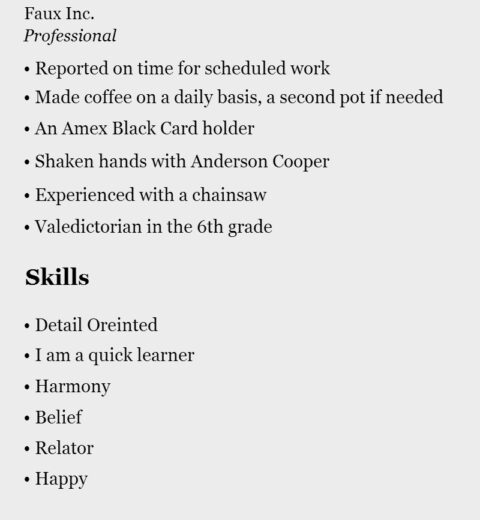In an increasingly competitive job market, the ability to resonate with prospective employers through a well-crafted resume can be pivotal. Yet, many job seekers grapple with the right approach to showcase their professional narrative. What constitutes a great resume? Beyond the basics of structure and formatting, there are nuanced elements that make a resume not just good, but exceptional. Understanding these underlying principles can propel job applicants from the rejection pile to the interview room.
The first step in writing a compelling resume is understanding its fundamental purpose: to serve as a marketing tool for oneself. A resume is not merely a list of past jobs and educational backgrounds; rather, it should encapsulate your professional persona succinctly. It’s a narrative that unfolds through carefully chosen words and strategic formatting. The challenge lies in distilling vast experiences into a two-page document that captures the essence of who you are as a candidate.
One of the most glaring mistakes candidates make is failing to tailor their resumes for each application. Recruiters often encounter resounding monotony when candidates submit generic documents that do not reflect the specific requirements of the role. It’s essential to meticulously read job descriptions and tailor your skills and experiences to align with the expectations outlined therein. An effective strategy involves incorporating relevant keywords that resonate with the industry. This not only demonstrates comprehension of the sector but also enhances the likelihood of passing through applicant tracking systems (ATS) that many companies utilize.
Moreover, the inclusion of quantifiable achievements can elevate the quality of a resume immensely. Rather than merely listing responsibilities from previous positions, articulate accomplishments that quantify your impact. For instance, instead of stating “managed a team,” one might say, “led a team of five to achieve a 20% increase in quarterly sales.” Numbers offer concrete evidence of your capabilities and provide context that enhances credibility. This element of specificity often piques the interest of hiring managers, as it translates your experience into tangible benefits for their organization.
Another aspect that can significantly differentiate a great resume from a mediocre one lies in the presentation. Clarity and visual appeal play a crucial role in ensuring that your resume captures attention. Employing a clean layout with well-defined sections can create a functional aesthetic. Consistent formatting—such as uniform font sizes, proper use of white space, and distinct headings—facilitates readability. Employers sift through resumes rapidly; thus, providing them with a visually coherent document can significantly influence their perception of your professionalism.
Additionally, the power of a strong opening cannot be understated. The resume summary or objective statement—often the first section read—serves as an opportunity to form a strong first impression. This brief paragraph should encapsulate your professional identity while providing insight into your career goals. It should be compelling enough to entice the reader to delve deeper into your resume. High-impact language and an understanding of what the employer might seek can transform this section into a persuasive introduction to your candidacy.
Equally important is the acknowledgement of the significance of soft skills. While technical abilities are undoubtedly essential, employers are increasingly valuing interpersonal skills and emotional intelligence. Soft skills such as communication, teamwork, and problem-solving can complement technical proficiencies and make you a more appealing candidate. Embedding these skills within real-life contexts in the experience section enhances their relevance and demonstrates your adaptability in various settings.
Moreover, the relevance of industry standards should not be neglected. Different sectors may have specific expectations regarding resume length, format, and content emphasis. For example, creative industries may welcome visually daring resumes, whereas corporate sectors typically favor straightforward and traditional formats. Researching industry-specific best practices can provide clarity on these expectations, allowing your resume to align with what hiring managers anticipate in a candidate’s presentation.
Incorporating potential barriers to hiring is a critical yet often overlooked aspect of resume writing. Many job seekers fail to consider their gaps in employment or job-hopping tendencies. Addressing these concerns proactively in a way that turns them into assets can mitigate doubts in the minds of hiring managers. For instance, if you took time off for personal development or education, outline these experiences to illustrate growth and resilience. Such transparency breeds trust and can entice employers to view your unconventional path favorably.
Furthermore, the importance of continual refinement cannot be overstated. After you draft your resume, solicit feedback from trusted colleagues or mentors. A fresh perspective can illuminate areas for improvement that may have been previously overlooked. Utilizing professional resume writing services may also be advantageous; they can cater your resume to more succinctly capture the nuances of your professional journey.
In conclusion, writing a great resume transcends mere information; it is about crafting a compelling narrative that speaks to your professional ethos while aligning with the needs of potential employers. By understanding the subtler elements of effective resume writing—such as tailored content, quantifiable achievements, visual coherence, soft skills, industry standards, and proactive address of employment barriers—you can create a document that not only gains attention but also positions you as a prime candidate for the opportunities you seek. As you embark on this journey, remember that the ultimate goal is not just to list qualifications but to tell a story that captivates, resonates, and compels action.




